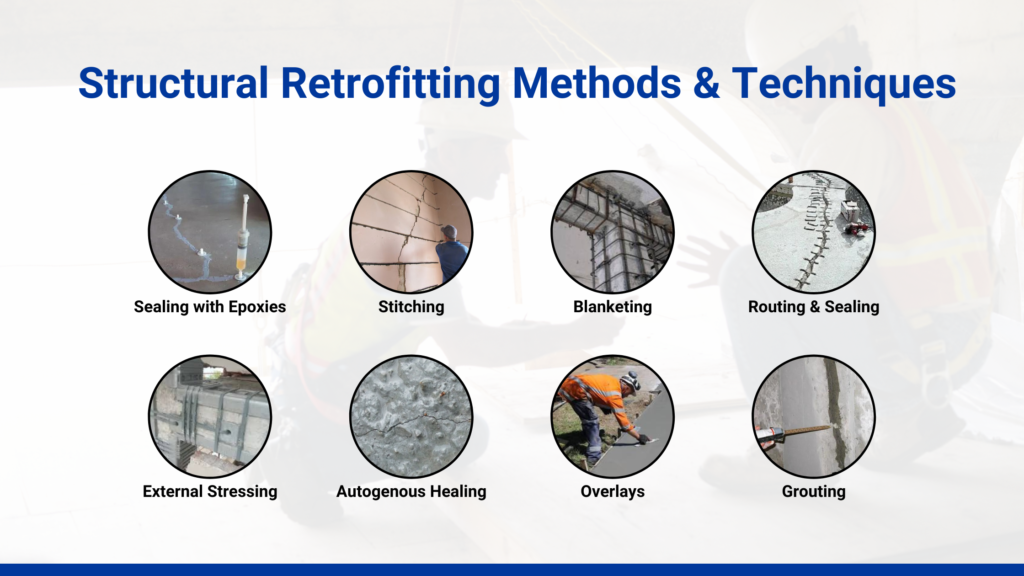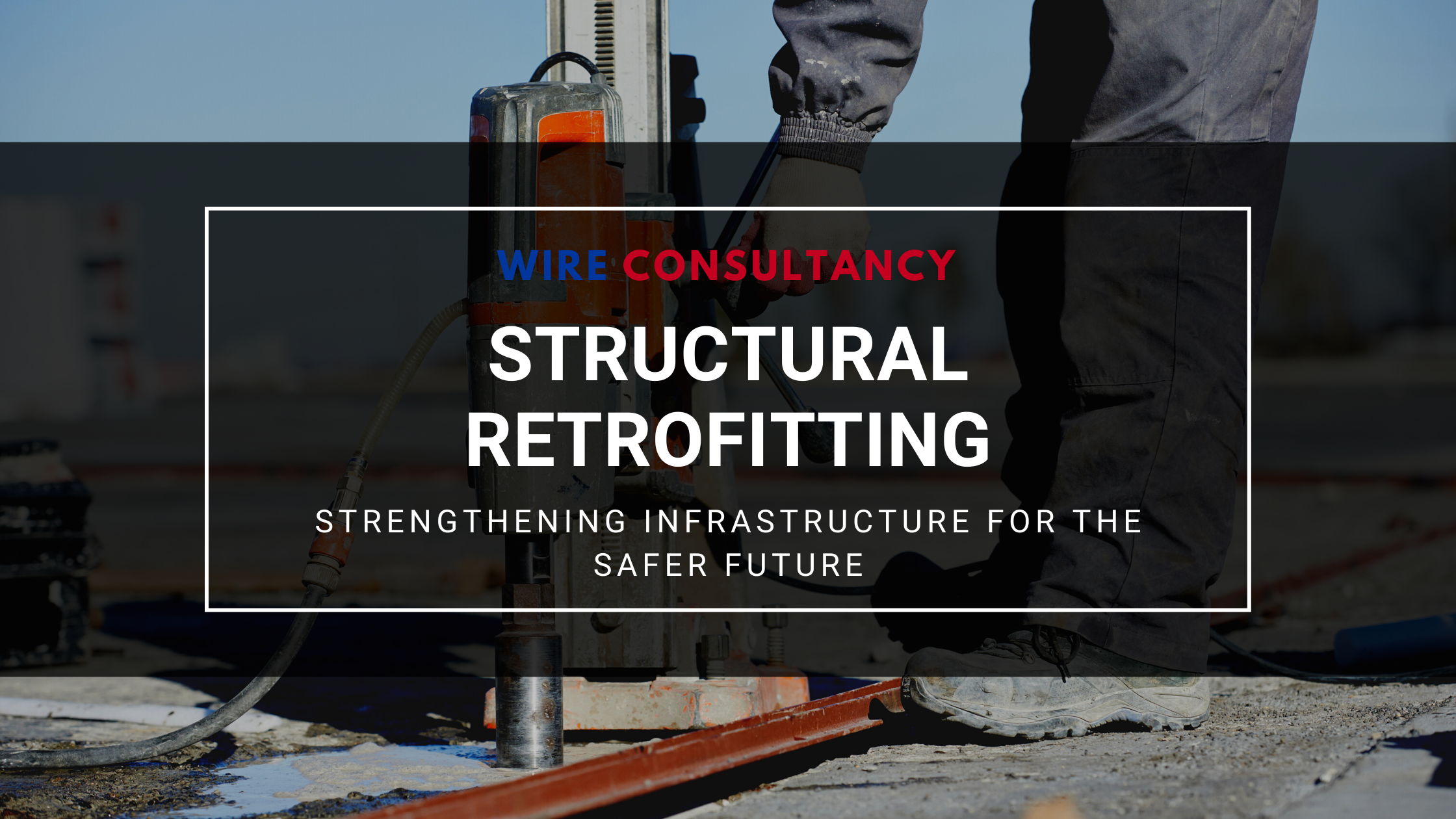In a world driven by innovation and the need for infrastructure improvement, the concept of structural retrofitting has emerged as a powerful tool. This transformation ensures the longevity of our structures and plays a pivotal role in enhancing their safety, performance, and functionality. In this comprehensive guide, we will dive into the concept of structural retrofitting, exploring its purpose, methods, benefits, and how Wire Consultancy is leading the way in empowering structural solutions.
Section 1. What is Structural Retrofitting?
Structural retrofitting is the process of upgrading, modifying, or enhancing existing structures to accommodate new functionalities, improve performance, and meet current standards. It’s like giving a building a new lease on life, adapting it to the ever-evolving demands of society.
Section 2. The Purpose and Necessity of Structural Retrofitting
The necessity of structural retrofitting cannot be overstated. With aging infrastructure and the pressing need to improve safety, energy efficiency, and resilience, structural retrofitting offers a holistic approach. It addresses the challenges posed by outdated designs, enhances safety, and paves the way for a more sustainable future.
2.1. Addressing Structural Issues: Over time, structures can develop cracks, corrosion, or damage due to various factors. Structural retrofitting reinforces the structure, mitigating the risks associated with these issues.
2.2. Enhancing Load-Bearing Capacity: Increased loading beyond a structure’s design capacity can result from various factors, including renovations or changes in building usage. Structural retrofitting ensures that the structure can withstand these additional loads without the risk of failure.
2.3. Rectifying Design or Construction Errors: Mistakes in the original design or construction process can lead to structural weaknesses. Retrofitting identifies these errors and rectifies them, ensuring that the building meets current safety and performance standards.
2.4. Adapting to Modifications: When a building undergoes significant modifications or expansions, the existing structure may need to be adapted. Retrofitting is essential to integrate new elements seamlessly into the existing system while maintaining structural integrity.
2.5. Seismic Retrofitting: In regions prone to earthquakes, seismic retrofitting enhances a building’s resistance to seismic forces, reducing the risk of damage or collapse during an earthquake.
2.6. Combatting Corrosion: Structural elements can corrode over time, especially in harsh environments. Retrofitting includes corrosion protection measures to extend the lifespan of these elements and prevent potential failures.
Structural retrofitting serves as a proactive approach to address these challenges, ensuring the safety, functionality, and longevity of existing structures.
Section 3. Methods and Techniques in Structural Retrofitting
Structural retrofitting methods and techniques have evolved significantly over the years. From innovative construction materials to cutting-edge technologies like Building Information Modeling (BIM), Wire Consultancy employs a myriad of tools to execute structural retrofitting projects with precision and efficiency.

3.1. Sealing with Epoxies: This retrofitting method involves injecting epoxy resins into cracks or voids within the structure. Epoxies provide an effective means of sealing and bonding, restoring the integrity of the damaged area. This method is commonly used for repairing cracks in concrete structures and preventing further deterioration.
3.2. Stitching: Stitching involves drilling holes on either side of a crack or joint and inserting metal rods or dowels to reconnect and strengthen the separated sections. This technique is particularly useful for masonry structures and helps distribute stress and restore load-carrying capacity.
3.3. Blanketing: Blanketing is employed to reinforce masonry walls by attaching a layer of reinforced concrete or steel plates to the existing surface. This added layer enhances the structural capacity of the wall, making it more resistant to external forces and impacts.
3.4. Routing and Sealing: In this method, the cracks in concrete or masonry are widened or routed to create a uniform channel. Subsequently, the routed cracks are filled with sealants, such as epoxy or polyurethane, to seal them and prevent the entry of moisture, chemicals, or other deleterious substances.
3.5. External Stressing: External stressing, often associated with post-tensioning, involves the application of external forces to strengthen a structure. High-strength tendons or cables are tensioned and anchored to the structure, increasing its load-carrying capacity and enhancing its ability to withstand additional loads.
3.6. Autogenous Healing: Autogenous healing is a fascinating method wherein the structure’s inherent ability to repair itself is harnessed. When cracks form, certain materials like self-healing concrete can autonomously react with environmental conditions to seal the cracks and restore structural integrity.
3.7. Overlays: Overlays are commonly used for roads, bridges, and parking decks. They involve placing a new layer of material, such as asphalt or concrete, over the existing surface. This not only reinforces the structure but also provides a smoother, more durable finish.
3.8. Grouting: Grouting is used to fill voids or gaps within masonry walls or structures. A grout mixture is pumped into the gaps, effectively bonding and strengthening the masonry components. This method enhances structural stability and weather resistance.
Section 4. Benefits of Structural Retrofitting
The advantages of structural retrofitting extend far beyond mere structural improvements. It’s a powerful means to improve safety, extend the lifespan of structures, and elevate the overall quality of life.
Section 5. How Wire Consultancy Empowers Structural Retrofitting Solutions
At Wire Consultancy, we are at the forefront of structural retrofitting innovation. Our team of experts combines extensive knowledge with a commitment to delivering high-quality structural solutions. We offer end-to-end solutions, from meticulous assessments and planning to execution and monitoring. Our expertise spans various industries, and we tailor structural retrofitting strategies to the unique needs of each project.
Conclusion: Structural Retrofitting for a Better Tomorrow
In a world where infrastructure improvement is essential, structural retrofitting remains a cornerstone of our journey towards a better future. It’s not just about improving infrastructure; it’s about securing a safer future. With Wire Consultancy as your partner, you can be confident in our commitment to delivering structural retrofitting solutions that enhance both your infrastructure and the world we share. Together, let’s build a better tomorrow, one structural retrofit at a time.

